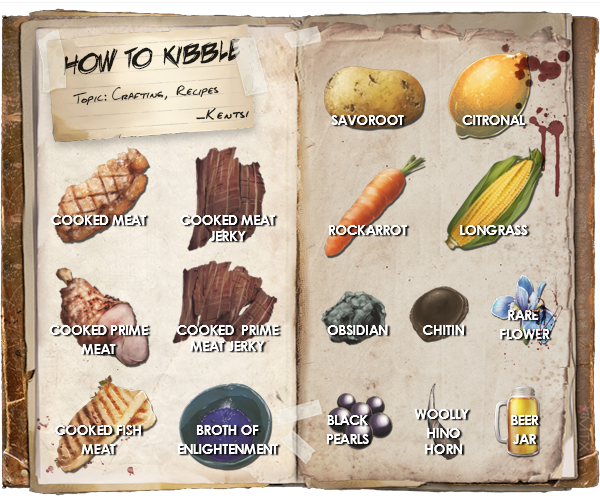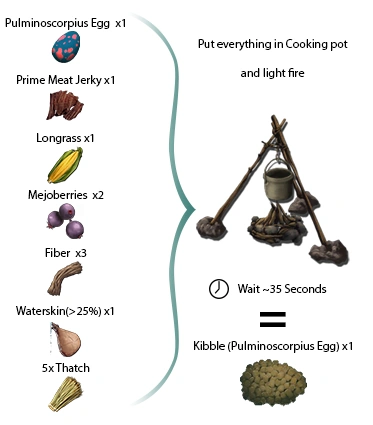How to Make Kibble: A Step-by-Step Guide to Homemade Pet Food
When it comes to providing a balanced diet for our furry friends, kibble is a popular choice among pet owners. While there are countless commercial options available, making homemade kibble ensures you have control over the ingredients and can tailor the recipe to your pet's specific needs. In this comprehensive guide, we will walk you through the process of making kibble, step by step.

Kibble
1. Understanding the Benefits of Homemade Kibble
1.1. Health and Nutrition:
Homemade kibble allows you to use high-quality ingredients and avoid additives and preservatives commonly found in commercial pet foods, promoting better overall health and nutrition for your pet.
1.2. Ingredient Control:
By making your own kibble, you have full control over the ingredients, ensuring that your pet receives a well-balanced diet tailored to their specific dietary requirements.
1.3. Allergies and Sensitivities:
If your pet has allergies or sensitivities, homemade kibble allows you to avoid potential allergens and create a specialized diet to meet their unique needs.
2. Gathering the Necessary Ingredients and Equipment
2.1. Ingredients:
To make homemade kibble, you will need a combination of protein sources (such as chicken or beef), carbohydrates (such as brown rice or sweet potatoes), vegetables, and essential nutrients (like fish oil or vitamin supplements).
2.2. Equipment:
Gather essential kitchen tools like mixing bowls, a food processor or blender, baking sheets, and an oven.
3. Creating the Kibble Recipe
3.1. Research:
Consult with your veterinarian or a pet nutritionist to determine the appropriate ratios of ingredients based on your pet's age, size, and specific dietary needs.
3.2. Recipe Development:
Use the information gathered to create a balanced recipe that includes the necessary protein, carbohydrates, and nutrients for your pet.
3.3. Meal Planning:
Calculate the appropriate portion sizes and prepare a meal plan to ensure your pet receives a balanced diet throughout the week.
4. Preparing and Cooking the Kibble
4.1. Ingredient Preparation:
Wash and chop vegetables, cook proteins, and prepare any other ingredients as required by your recipe.
4.2. Mixing:
Combine all the ingredients in a large mixing bowl, ensuring an even distribution of nutrients.
4.3. Processing:
Use a food processor or blender to create a consistent texture for the mixture. This step helps bind the ingredients together and enhances digestibility.
4.4. Shaping the Kibble:
Take small portions of the mixture and shape them into bite-sized kibble using your hands or a cookie cutter.
4.5. Baking:
Preheat your oven and place the kibble on baking sheets. Bake at the recommended temperature until the kibble is dry and crispy.

Kibble Recipe
5. Storing and Serving Homemade Kibble
5.1. Cooling:
Allow the kibble to cool completely before handling or storing to prevent moisture retention and potential spoilage.
5.2. Storage:
Store the homemade kibble in airtight containers in a cool, dry place to maintain freshness and extend shelf life.
5.3. Serving:
Serve the appropriate portion sizes according to your pet's feeding guidelines. Monitor your pet's weight and adjust the portion sizes if necessary.
6. Ensuring Safety and Quality
6.1. Hygiene:
Maintain proper hygiene throughout the preparation process by washing your hands, utensils, and surfaces to avoid contamination.
6.2. Quality Control:
Regularly inspect the ingredients for freshness and ensure that the kibble is stored properly to maintain its nutritional value.
Making homemade kibble for your beloved pet allows you to provide a wholesome and nutritious diet tailored to their specific needs. By following this step-by-step guideand taking the time to understand the benefits of homemade kibble, gathering the necessary ingredients and equipment, creating a balanced recipe, and ensuring proper preparation and storage, you can confidently provide your pet with a healthy and delicious alternative to commercial pet food. Remember to consult with your veterinarian or a pet nutritionist for personalized guidance and enjoy the satisfaction of knowing exactly what goes into your pet's food.